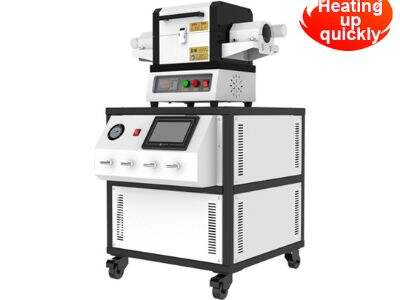Yleiskatsaus tärinäpallojyrsintään
Hei nuoret lukijat! Miksi olet kiinnostunut siitä, kuinka tutkijat parantavat pieniä hiukkasia eri tuotteissa? No, yksi erittäin siisti tekniikka, jota he käyttävät, on jotain nimeltään tärinäpallojyrsintä! Ei kukaan muu kuin Nanjing Chishun, pieni erityinen yritys, joka työskentelee näiden superhienojen teknologioiden parissa, joista opimme tänään kaiken ja kuinka se toimii ja kuinka arvokasta se todella on.
Mitä on tärinäpallojyrsintä?
Joten mitä on tärinäpallojyrsintä ensinnäkin? On olemassa prosessi, jossa tutkijat ottavat esimerkiksi materiaaleja, metalleja tai kemikaaleja ja laittavat ne jättimäiseen altaaseen, joka on täytetty pienillä metallipalloilla. Sitten he ravistelevat ja tärisevät säiliötä erittäin suurilla nopeuksilla. Näytteitä ravistellaan säiliössä, jossa on useita erittäin kovia metallipalloja. Tämä lyöminen hajottaa materiaalit yhä pienemmiksi paloiksi tai hiukkasiksi.
Nyt tiedemiehet voivat hallita tätä prosessia muuttamalla pari asiaa, kuten säiliön kokoa ja muotoa sekä sitä, kuinka nopeasti säiliö tärisee. Tämän ansiosta he voivat valmistaa hiukkasia, joilla on ainutlaatuiset ominaisuudet ja jotka on räätälöity täydellisesti heidän sovelluksiinsa. Pidemmät hiukkaset eivät tukkeudu yhtä nopeasti, koska ne vievät vähemmän käytettävissä olevaa pinta-alaa, jolloin tuloksena on pehmeämpi rakenne, jossa on vähemmän teräviä reunoja, jolloin ne voivat muokata hiukkasia sopivaksi paremmin eri tuotteisiin!
Jotkut syyt, miksi hiukkaskoolla on väliä:
Ja yksi tärkeimmistä näkökohdista, joita tutkijat harkitsevat tuotaessaan näitä pieniä pilkkuja, on niiden koko. Tätä kutsumme kokojakaumaksi. Kokojakauma tarkoittaa yleensä sitä, että hiukkaset voivat olla eri kokoisia. Jos hiukkaset ovat liian suuria tai liian pieniä, ne eivät välttämättä sekoitu hyvin muiden materiaalien kanssa tai liukene kunnolla nesteisiin. Niiden käyttäminen tuotteissa voi kuitenkin aiheuttaa ongelmia.
Värähtelykuulajyrsinnässä tiedemiehillä on nyt työkalu valmistaa hiukkasia, joiden kokojakauma on kapeampi. Tällä he voivat varmistaa, että kaikki hiukkaset ovat sopivan kokoisia, jotta ne toimivat hyvin yhdessä. Hiukkasten pienentäminen juuri oikean kokoisiksi tekee niistä paljon tuottavampia erilaisille tuotteille, jolloin loppupään sovellukset voivat olla tehokkaampia sovelluksissa, jotka vaihtelevat lääkkeistä maaleihin ja elintarvikkeisiin!
– Tehokkaampia hiukkasia
Toinen hiukkasten keskeinen ominaisuus on niiden pinta-ala. Pinta-ala on ilmalle tai muulle materiaalille altistetun hiukkasen pinta-ala. Suuren pinta-alan omaavan hiukkasen tulee olla parempi vuorovaikutus muiden ympäristön materiaalien kanssa. Se on erityisen hyödyllinen monilla aloilla, kuten kemiallisten reaktioiden nopeuttamisessa laboratoriossa.
Esimerkiksi eräässä tapauksessa, jota kutsutaan katalyysiksi, tiedemiehet "kiihdyttävät" kemiallisia reaktioita käyttämällä hiukkasia, joilla on suuri pinta-ala. Tärinäkuulajyrsinnällä tutkijat voivat tuottaa suuremman pinta-alan hiukkasia. Tämä tarkoittaa, että nämä pienet hiukkaset voivat joissain tapauksissa toimia paremmin ja tehokkaammin.
Värähtelevä kuulamyllyprosessi; Värinämylly; Tärinä;
Joten miten tärinäkuulajyrsintä toimii käytännössä? Se yhdistää hiukkaset mekaanisin ja kemiallisin menetelmin. Säiliön teräspallot hajottavat materiaalit hienoksi jauheeksi, kun sitä sekoitettiin. Tätä hajoamista kutsutaan mekaaniseksi jyrsimiseksi, koska se pakottaa materiaalit fyysisesti muuttumaan.
Mutta ei siinä vielä kaikki! Nopeat tärinät voivat myös laukaista tiettyjä kemiallisia reaktioita metallipallojen ja materiaalien välillä. Se voi tuottaa uusia materiaaleja ja parantaa hiukkasten laatua tällaisten reaktioiden kautta. Tämä tarkoittaa, että tärinäkuulajyrsintä ei vain kutista hiukkasia, vaan voi myös muuttaa niiden koostumusta suorituskyvyn parantamiseksi.
Tärinäkuulajyrsintä vääntyneillä materiaaleilla
Hän muokkaa materiaaleja hiukkasiksi, joilla on potentiaalisia ominaisuuksia ottamalla käyttöön tärinäkuulajyrsintätekniikkaa. Ne voivat tuottaa hiukkasia, jotka ovat vahvempia, kooltaan tasaisempia - tai jopa reaktiivisempia. Kyky manipuloida hiukkasia tällä tavalla on hyödyllinen eri aloilla, kuten tuotteiden valmistuksessa, uusien lääkkeiden valmistuksessa ja opiskeluympäristössä.
Joten esimerkiksi valmistuksessa tasainen partikkelikoko voi antaa parempia tuotteita, ja lääketieteessä reaktiivisemmat hiukkaset voivat saada lääkkeet toimimaan nopeammin ja paremmin kehomme kanssa. Jotkut tärkeimmistä kehityksestä tehdään tärinäkuulajyrsinnän avulla.
Johtopäätös
Lopuksi: laboratoriojalkapallo Nanjing Chishun on mekaaninen yritys, joka keskittyy tärinäkuulajyrsintään. He käyttävät tätä innovatiivista tekniikkaa tuottamaan hiukkasia, joilla on ainutlaatuiset ominaisuudet (kuten optimaalinen koko ja suuri pinta-ala). Se muuttaa nämä materiaalit jauhemuotoisiksi hiukkasiksi, jotka on viritetty sopimaan paremmin tiettyihin sovelluksiin mekaanisten ja kemiallisten prosessien yhdistelmällä. OK on parempi harjoitella tärypallojyrsintää tämän sivun sijaan suurena vallankumouksena hiukkastekniikassa. Eikö se ole kiehtovaa?

 EN
EN
 AR
AR
 BG
BG
 CS
CS
 DA
DA
 NL
NL
 FI
FI
 FR
FR
 DE
DE
 EL
EL
 HI
HI
 IT
IT
 JA
JA
 KO
KO
 NO
NO
 PT
PT
 RO
RO
 RU
RU
 ES
ES
 SV
SV
 TL
TL
 ID
ID
 SR
SR
 VI
VI
 SQ
SQ
 HU
HU
 TH
TH
 TR
TR
 FA
FA
 MS
MS
 BE
BE
 IS
IS
 BN
BN
 LO
LO
 LA
LA
 MN
MN
 KK
KK
 UZ
UZ
 LB
LB
 XH
XH


